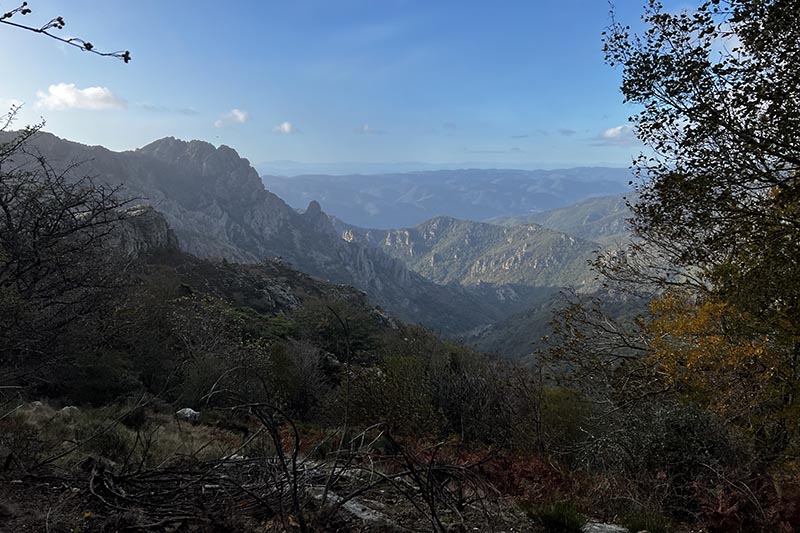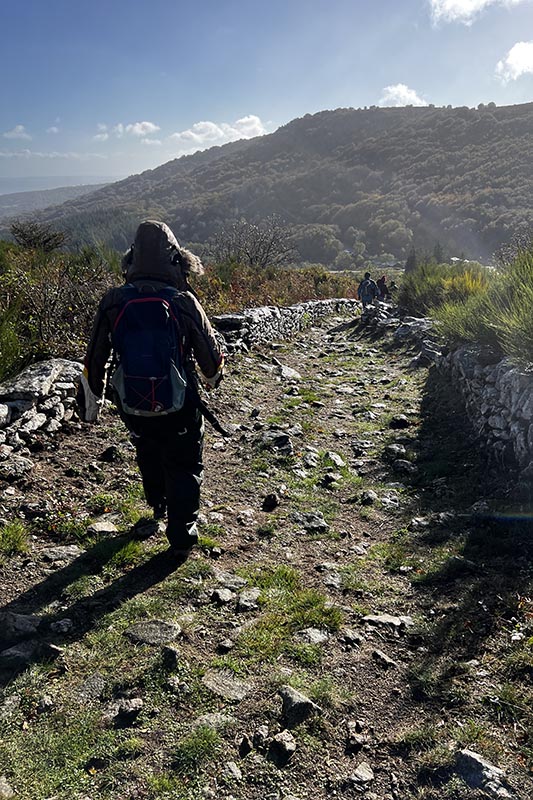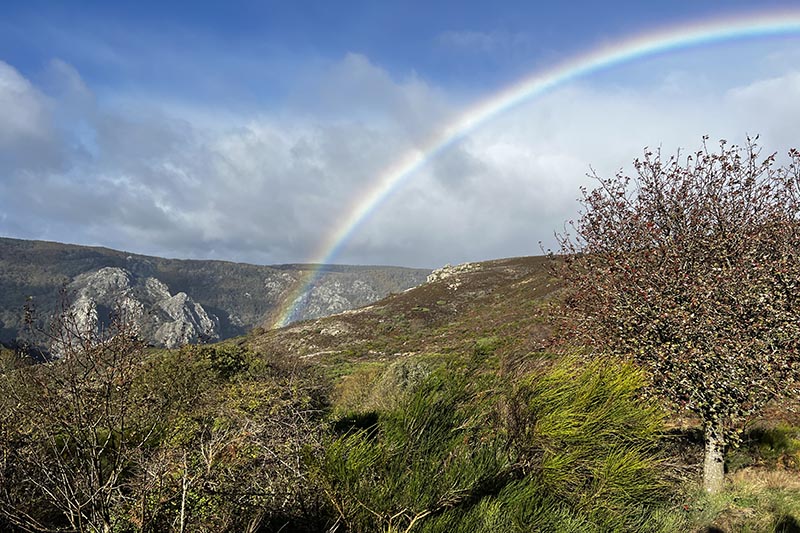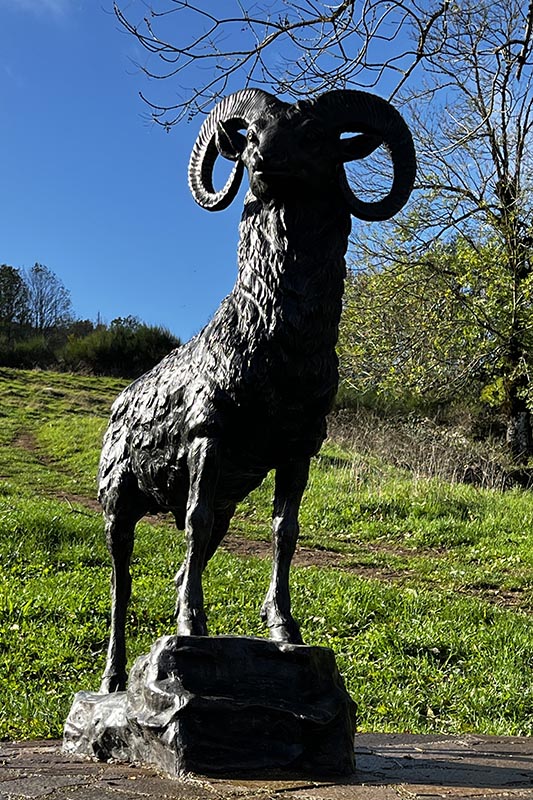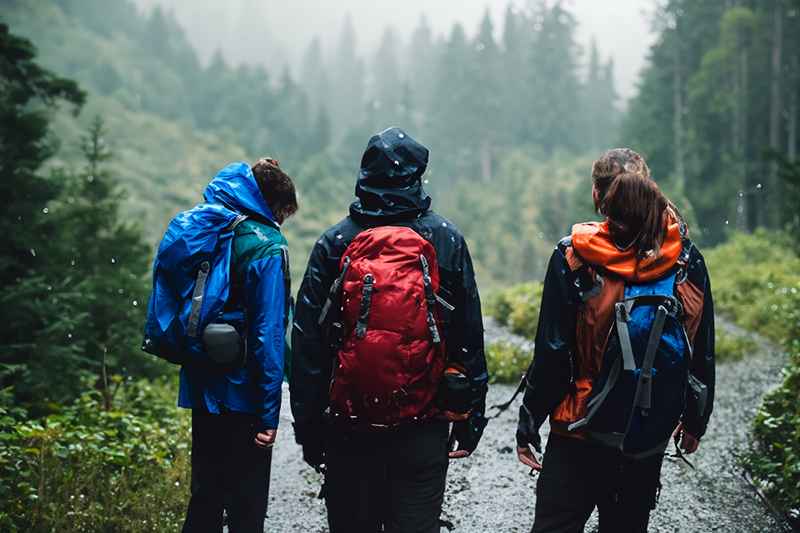Whether you are a hiking enthusiast or a beginner hiker, having suitable equipment for a hike in the rain is essential. Indeed, rain should not disrupt or spoil your ride. What’s more beautiful than nature in rainy weather? Smell smells, listen to sounds and noises, see lights and colors, touch. In the rain, nature offers another face, other sensations. Be part of the happy few who experience these unique moments of (re)discovery of nature, all the senses awakened!
What clothing should you wear for walking in the rain?
When hiking in certain areas of France or the world, the weather is sometimes changeable and it is difficult to predict precisely what the weather will be like. Do you want to hike in Brittany, in the Massif Central or in the Pyrenees, in Scotland, Ireland or New Zealand? It is important to consider all scenarios and equip yourself accordingly. How to dress for hiking in the rain (and enjoy it)? Alongside your Overcap hood, an absolutely essential piece of equipment, there are several items to include on your list. Let’s do a check in.

To equip yourself correctly and hike in the rain comfortably, it is necessary to first understand certain general rules relating to hiking clothing. You also need to take some precautions. Once these main principles have been integrated and a few checks have been carried out, all you have to do is draw up a list of your hiking equipment.
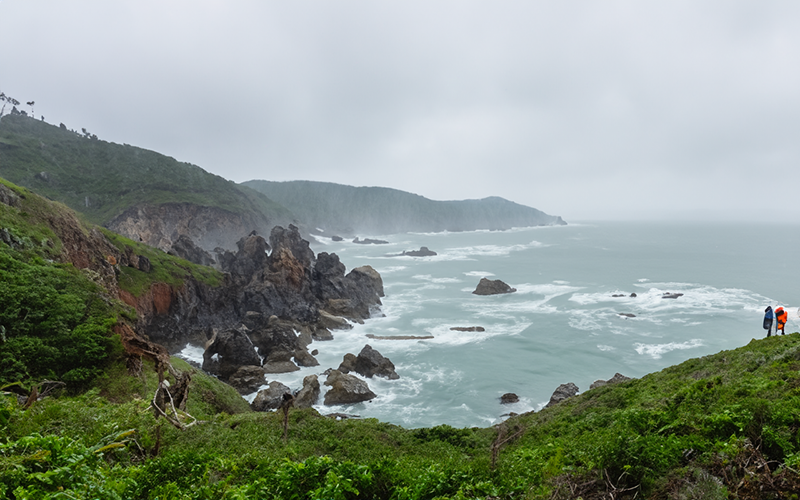
Some general tips to hike in the rain
Knowing that you risk hiking in the rain requires you to check the equipment you already have. For the equipment to purchase, it is appropriate to target certain essential characteristics. Here are some basic rules to remember:
Avoid cotton clothing
This material is not breathable, meaning it does not wick away perspiration. It is also very difficult to dry cotton clothing. This is therefore not really practical when you go for a hike of several days in rainy weather! Instead, choose clothing made from nylon, polyester, or merinos wool (better for the planet).
Choosing the right coating
Depending on the weather forecast, you will be asked to assess your needs. Hardshell or softshell? This is the eternal question! While the hardshell jacket is both waterproof and breathable, the softshell jacket protects against the cold, but is not waterproof. It is simply water-repellent. The hardshell jacket should therefore be considered as a third layer, against bad weather. As for the softshell jacket, it is a second layer, which keeps the heat in and possibly cuts the wind. In case of rain, the first one is a must!
Reactivate water repellency
Although technical, hiking clothing can lose performance. If you realize that the water repellency or impermeability of your clothes is no longer optimal, it is time to reactivate this functionality!
Repair worn clothes
Avoid changing clothes too soon! The environmental impact of products is mainly due to the manufacturing phase. So consider repairing or having your clothes repaired if the wear is localized. If they cannot be repaired, consider donating them to recycling centers or other recovery sites. They will be upcycled, which consists of dismantling or cutting them up to make new products. For example the Silibiliz brand which makes luggage from used technical textiles. If they are too worn they will be recycled. This involves grinding products to make new material which will be used to produce new objects. For example, PET water bottles which are used to make sweaters or shoes.
Evaluate the waterproof properties of your shoes
You will not use the same shoes for a sunny hike and for a walk in the rain. Some coatings are water-repellent and are useful in bad weather (Garmont Dragontail LT Gtx, Zamberlan Trail Gore-Tex RR, for example). Non-water repellent mesh shoes are less protective, but dry more quickly. This can be a good choice if you know that the rain will be of moderate intensity and for a short duration.
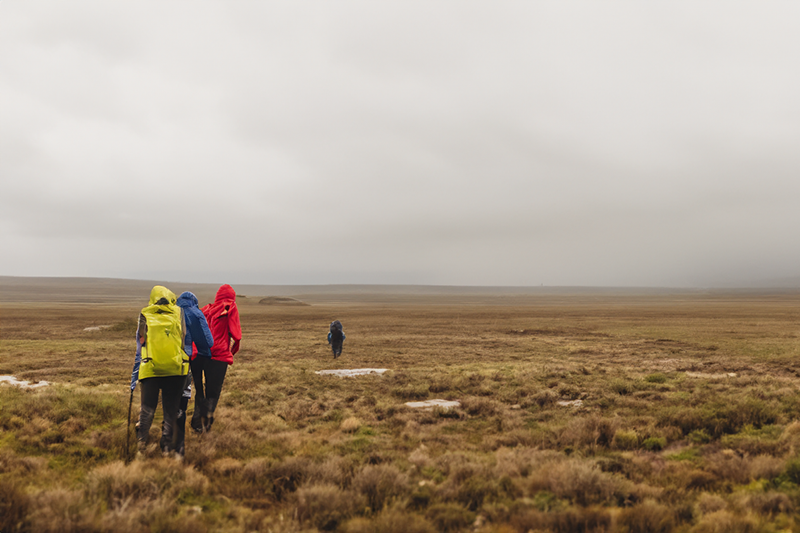
The list of clothes for a hike in the rain
Have you taken note of the previous tips for hiking in the rain comfortably? It’s time to make a list of the main equipment, that is, the clothes you will wear or carry for your hike in the rain.
Here is the equipment for walking in the rain for a day:
- a first layer of merino wool,
- and a softshell jacket, just if it’s cold,
- or a hardshell jacket, to keep you dry, because a purely water-repellent garment will not be enough if the rain is heavy,
- merino wool leggings to put under your pants if it’s cold,
- waterproof-breathable overtrousers,
- gaiters to protect your socks and the tops of your shoes,
- a pair of merino wool hiking socks, to keep your feet warm, even if they are wet,
- draining shoes rather than waterproof ones, because they will still end up getting wet. They will dry faster if the water can escape quickly,
- a complete change: when the weather conditions are not good, it is preferable to bring a complete change (trousers, tops, underwear). Otherwise your hike could quickly turn into a nightmare!
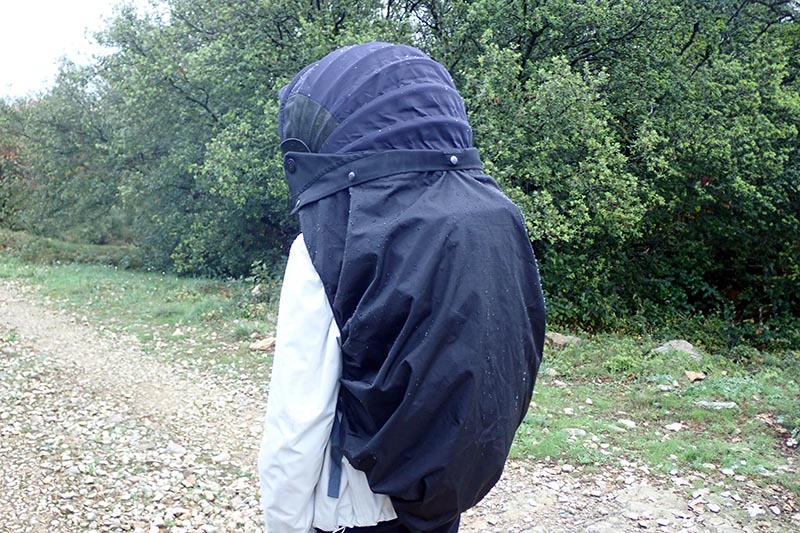
What equipment for hiking in the rain?
The backpack
To hike in the rain with all the necessary comfort, a hiking bag is essential. However, when it rains, rain can seep through each of the storage pockets as soon as you open them. This is why there are backpack rain covers or capes, which are sold with the backpacks or separately. However, in the event of prolonged rain, this protection is partial. They do not prevent water from flowing between your back and the bag, which gradually moistens the backpack. If the rainy episode lasts forever, the entire contents of the bag can get wet! This accessory should therefore be reserved for short and occasional rains, or used with the Overcap rain cape. This is in fact the only protection that prevents rain from flowing between your back and the bag (see below).
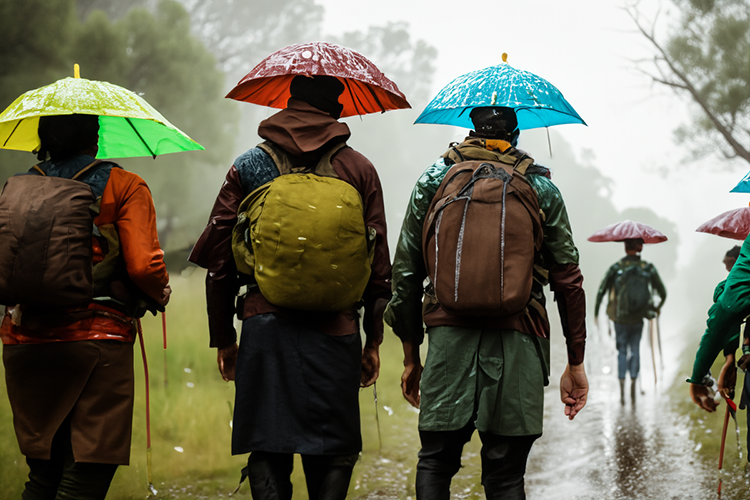
The rain poncho
The famous “rain poncho” is a large rain cape that you put on over everything: you and your backpack. In terms of waterproof material, this equipment is very effective protection against the rain but it is not without its drawbacks.
The other side of the coin is that the material is often not breathable, unless you pay the price. We then end up with a very heavy and not very compact product when it comes to storing it in the backpack. In addition, this large cape can be annoying for our movements. And its hood is not a model of practicality: you sweat and your field of vision is seriously reduced. In addition, its size is unique and if it is too long for you, you risk stepping on it when going up a slope and therefore losing your balance. Hiking in the rain with a poncho can then become a real nightmare!
These are the reasons why this equipment has many detractors who prefer to invest in a technical rain jacket with a hood. Or in an Overcap with its rain cape (see below)!
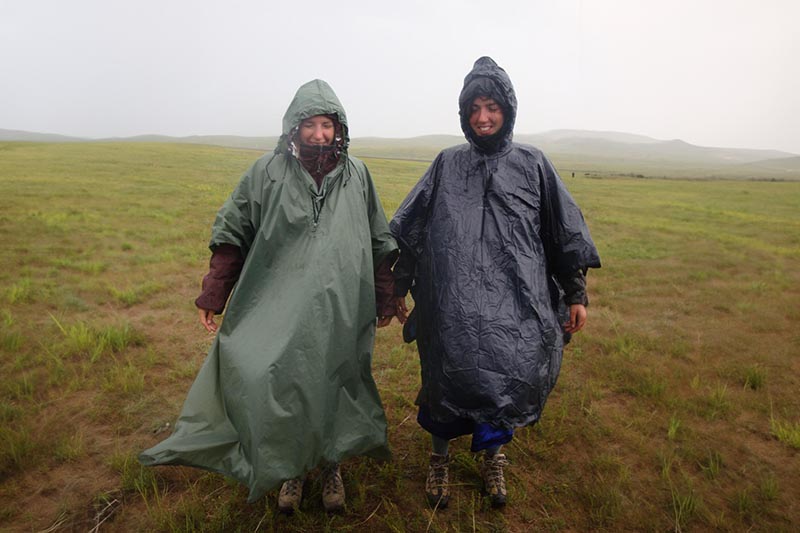
The hood of your rain jacket
The hood of these jackets also has its own limitations and detractors. standard hoods provide the most commonly used protection. But, but have you ever railed against a hood that blows away at the slightest gust? Technical jacket hoods have a drawstring to prevent this. But if the drawstring is tight, the hood sticks to your face or obscures your view… In the rain, it makes you sweat and does not protect your eyes and your glasses… As soon as you move your head a little, the noise of rubbing of the canvas is unpleasant and even prevents you from hearing your neighbor or listening to the sounds of your environment.
What a paradox: the comfort and practicality of a clothing hood are limited, but it is nevertheless the most used accessory when hiking, for lack of alternatives! Ah really ? Error, there is an alternative! We are going to show you a solution for hiking in the rain without these inconveniences!
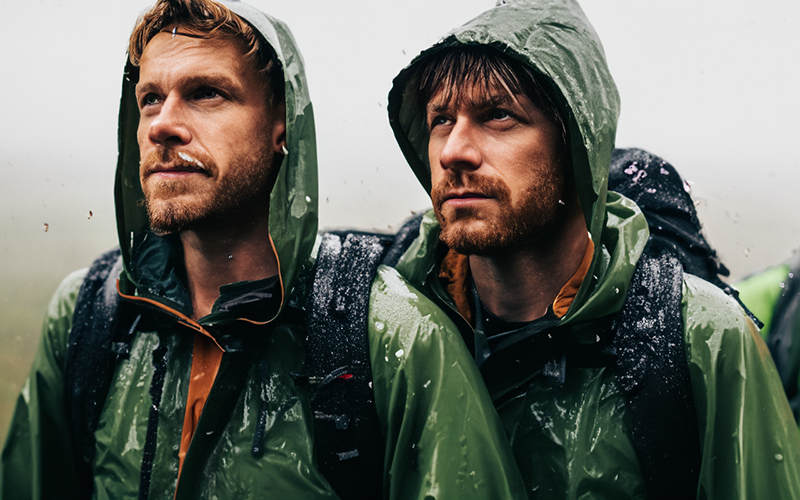
The Overcap hood
The Overcap hood is a hood that is durable, removable, comfortable, practical, light and compact. It leaves your head free to move, thanks to its fine frames which prevent the canvas from touching your head: it’s a real comfort that is really appreciated! Overcap therefore remains silent when you move your head and does not obstruct your field of vision.
It attaches to any type of backpack, then unfolds and folds as desired in a single, simple and quick movement. This way you keep your favorite jacket and backpack! You can fit a rain cape designed for this purpose, which completely prevents water from flowing between your back and the backpack!
With Overcap, you can, in a simple gesture, deploy and fold your hood and protect yourself every time you need it!
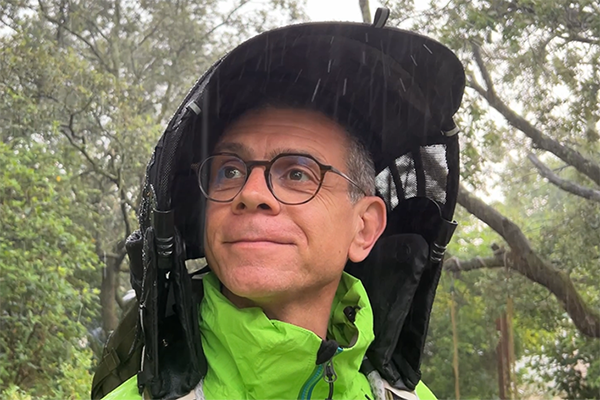
The sun is shining? Overcap also protects you from the sun! With this hood you have a single product to protect you in all seasons. Do you travel and hike on trails where insects are king? A removable mosquito net can be attached to your hood, without touching your face, to provide you with the necessary comfort, while keeping pests away. Whatever the weather and environmental conditions, Overcap is therefore the essential element of your hiking equipment in the rain, if you want to walk comfortably. You can even hike in the snow!
Accessories for hiking in the rain
Certain accessories can make a difference in terms of comfort when you go for a day trek in the rain:
- waterproof cases to keep your documents and fragile objects (cell phone, camera, compass, maps, keys, cash, etc.). A tip: choose cases of different colors, in order to find your belongings as quickly as possible and not leave your backpack open for too long,
- several waterproof bags for the clothes located in your bag,
- a selection of dressings, including against blisters because humidity increases the risk of friction in your shoes,
- hiking poles can be of great help to you, especially when hiking in the mountains in the rain.
Let’s go !
In conclusion, you now know how to hike in the rain with the best comfort. Ready to face the elements?
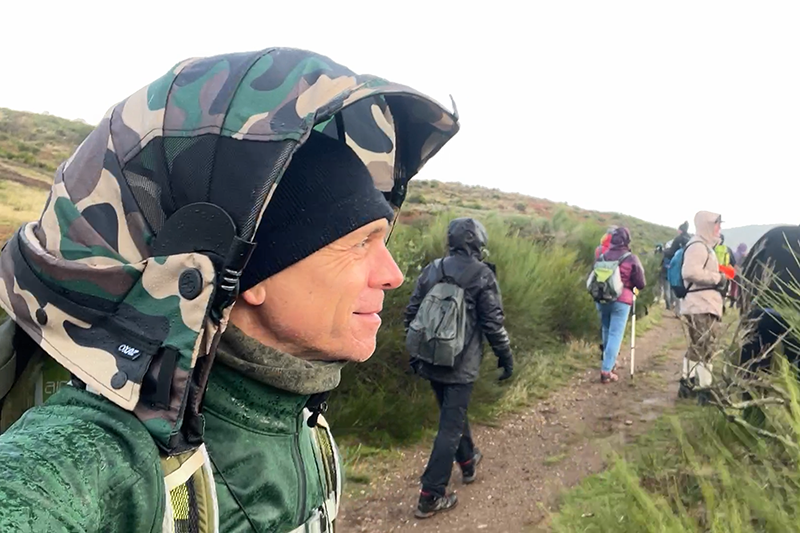
Feedback: an eventful hike with Occitanie-Rando !
At the heart of the Haut-Languedoc Regional Natural Park (South of France), Caroux (lo Cairosus meaning “The Pierreux”) is a real mountain, at the crossroads of 3 climates: Atlantic, Mediterranean and mountainous. Thus, it is crossed by numerous torrents in gorges which cut its luminous rock (gneiss), which earned it the nickname “Mountain of Light”.
We left (very) early in the morning with the aim of observing the mouflons. Introduced in 1956, the Corsican mouflon has acclimatized very well there and today forms the largest population of mouflons in France.
November is the rutting period, so we are pretty confident. Moreover, in the car we saw two in the distance from the road going up from Hérépian! Alas, arrived in Douch, the weather is not the same. We are greeted by gusts of (very) strong wind and a small intermittent but very biting sleet. Yes, we are in the mountains! Karen, our naturalist guide, is suddenly less optimistic about our chances of seeing bighorn sheep.
We nevertheless set off to attack the massif and discover superb landscapes bathed in changing lights. Gusts of wind and gusts of sleet alternate with temporary – but superb – clearings.
Well protected by my Overcap, I don’t suffer from the elements unlike my hiking friends!
An hour later we turned back, definitely convinced that we would see nothing, the weather conditions had deteriorated so much. The wind was unleashed and in these conditions everyone, humans and animals alike, took shelter.
Back in Douch, the only mouflon we saw distinctively today was the one carved next to the stone shelter at the entrance to the village!
Read the full story of the hike in this article from the Occitanie-Rando association.
